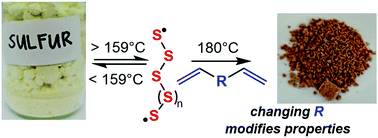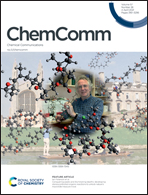The link to polysulfides and their applications
Abstract
This article highlights recent discoveries within the field of polysulfides which are created from waste sulfur through inverse vulcanisation. Due to the current environmental climate, making materials from renewable resources or industrial waste is highly desirable. Sulfur is an impurity refined out of petroleum and gas reserves at a rate of more than 70 million tonnes a year and is currently used in the rubber, fertiliser and chemical industries. However, even with these applications, the usage is significantly below the amount refined each year, leading to large stockpiles of sulfur. Inverse vulcanisation is an attractive method to synthesize new sulfur based materials by trapping the polysulfide using crosslinkers containing diene functionalities. A wide variety of unsaturated crosslinkers can be incorporated into polysulfide materials resulting in inorganic rubbers, combining the benefits of both components. The materials produced have been shown to selectively absorb mercury, are prominsing replacements for existing mid IR lenses, and can be used as capsules for controlled release fertilisers. An overview of the field, including the breadth of crosslinkers employed, synthetic strategies, and the properties and potential applications of polysulfides created through inverse vulcanisation, is captured.



 Please wait while we load your content...
Please wait while we load your content...